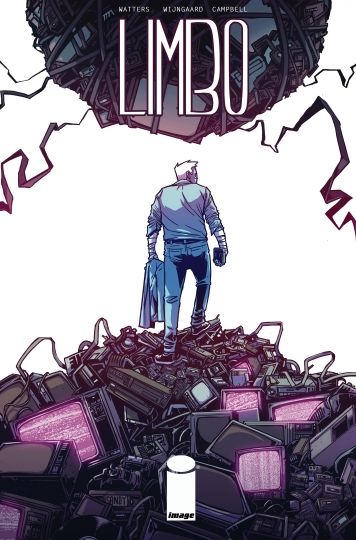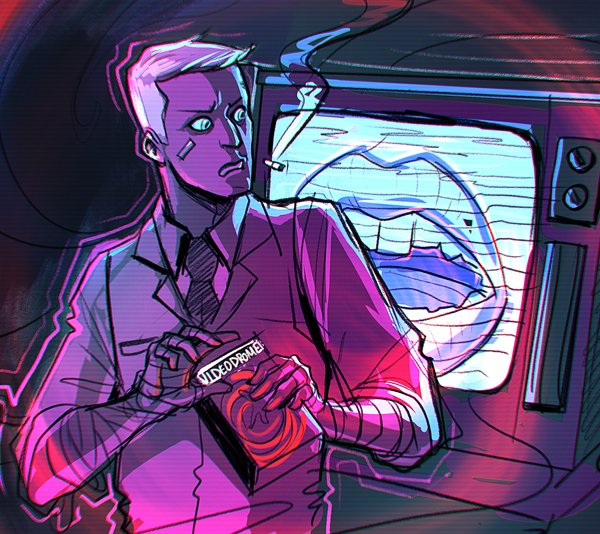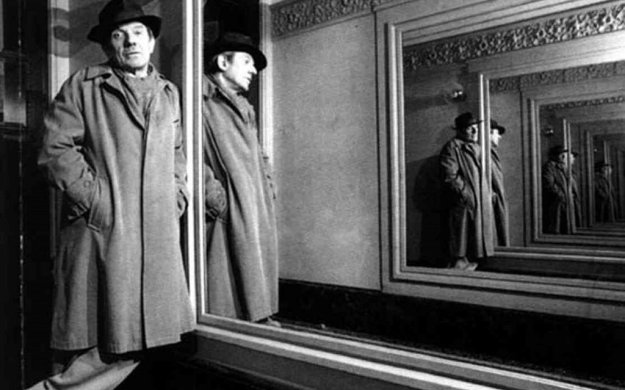The room in which John Keats died is a claustrophobic box. The small bedroom takes up a first floor corner of what is now the Keats-Shelley House Museum in Rome. The museum would be easy to walk past as it is inconspicuous in itself, and also as it overlooks the Scalinata di Trinità dei Monti, or Spanish Steps, a particularly monumental and notable landmark in a city full of monumental and notable landmarks. Keats moved there in 1820, having been advised by his doctor to move to a warmer climate due to the sickness that had taken hold of his lungs. Medically trained himself, Keats most likely knew that he would never be returning hom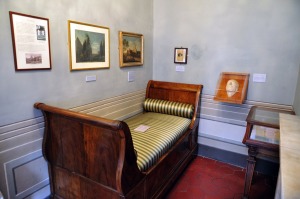 e to Fanny Brawne, the woman he loved. He put the finishing touches to Bright Star, the love sonnet he dedicated to her, on the voyage from England. The Roman villa that is now the museum was shared by Keats and his friend Joseph Severn, and backs directly onto the steps. One can only imagine that it would have been prime real-estate in any period. And yet the room in which John Keats died is a claustrophobic box.
e to Fanny Brawne, the woman he loved. He put the finishing touches to Bright Star, the love sonnet he dedicated to her, on the voyage from England. The Roman villa that is now the museum was shared by Keats and his friend Joseph Severn, and backs directly onto the steps. One can only imagine that it would have been prime real-estate in any period. And yet the room in which John Keats died is a claustrophobic box.
It’d be hardly big enough to swing a cat in, even if one did have much motivation for the art of cat-swinging while dying of tuberculosis. It is easy to imagine how tight those four walls closed in on the poet as he lay there, coughing up his life’s blood, becoming a prisoner of his own body, his lungs a pair of increasingly violent prison sentries.
The image we generally call to mind when thinking of Keats the Romantic, dying in a far off land, is one of much swooning, of the fragile, boyish writer merely wasting away, vanishing like the white foam of surf as a wave crashes on the shore. This image was perhaps carefully cultivated by the Victorians as they repurposed the poet into a safer, near mythical figure of doomed genius. We can also probably assume it was somewhat exacerbated by Shelley’s Adonais, his beautiful but certainly idealized elegy for Keats.
Standing in Keats’ room, however, it is easy to imagine how his coughing must have reverberated off the walls, how each hack must have amplified into a tinny slap. One may imagine that Severn, sleeping nearby in the next room, would have found it hard to not resent the sound in his own lower moments, to resent Keats himself for creating it, no matter how dedicated he was to the young writer. Severn would oft pull a rented piano into his own room, which doubled as the apartment’s living room, and play. Keats said that music was one of the few things that eased his pain as he waited to die; as he languished in the twilight that he referred to as his own “posthumous existence”. Fanny Brawne continued to send him letters, but he would no longer open them. He was no longer there.
In Bright Star, Keats wrote of his desire to be “steadfast” and ever-watching like a star in the night’s sky. Here at the end of his life, however, he already seemed to have become something of a ghost. After he died, the Italian authorities burned everything in his bedroom for “the purposes of public safety”. The furniture, bed and even wall scrapings went up in smoke. Keats didn’t leave a trace… or the trace that he did leave was a spectral one. The room today has been made up to look much as it may have during Keats’ final days, with the obvious addition of the standard museum trappings. A replica of his bed is pushed up against the wall where his used to be, replete with a small, postcard-like sign requesting that visitors do not touch it; this despite the fact that it is not Keats’ bed. Though it may look like it, he was never there.
Next to the head of the bed, where we may expect to find a bedside table (and what would have been kept on Keats’ bedside table, we may wonder. One of Fanny’s unopened letters? A well-thumbed book of aphorisms? Or simply a bottle of the sickly sweet-yet- bitter laudanum that he so fiercely demanded from his doctor, who refused to allow him enough to suicide on) there instead hangs a death-mask of his face. A bumpy nose and thin lips, closed perhaps a little too tight, compressed by the weight of the plaster on the corpse’s face. Here is perhaps the most accurate representation of the man we will ever see, and it is rendered in a deathly pallor, with eyes that we can still somehow tell are empty despite the fact that they are forever closed. The dead man’s face hangs, ever-watching, unseeing, over the dead man’s room. Keats is not there.
bitter laudanum that he so fiercely demanded from his doctor, who refused to allow him enough to suicide on) there instead hangs a death-mask of his face. A bumpy nose and thin lips, closed perhaps a little too tight, compressed by the weight of the plaster on the corpse’s face. Here is perhaps the most accurate representation of the man we will ever see, and it is rendered in a deathly pallor, with eyes that we can still somehow tell are empty despite the fact that they are forever closed. The dead man’s face hangs, ever-watching, unseeing, over the dead man’s room. Keats is not there.
So if Keats is not within the room where he died, then where is he? Leave the museum through the gift shop, hop on the city’s Metro and in twenty five hot and crowded minutes we may arrive at the poet’s grave. Buried in the Non-Catholic Graveyard, Keats’ bones reside in the shade of the Piramide di Caio Cestio, a genuine 2000 year old pyramid that sits somewhat bizarrely on the corner of a busy main road and has been carefully built into the Aurelian Walls of the city, slightly giving it the air of something that has grown rather than been built by human hands, like an extremely grandiose dandelion or a tree root that has snuck under and up through a garden patio. The graveyard is carefully maintained and is home to dozens of stray cats, who are equally well maintained by volunteers who feed and water them regularly and affectionately. (It is a pleasing thought that Keats, who once composed a sonnet To Mrs Reynolds’ Cat would have been rather tickled by this idea.) Much as he did in the villa by the Scalinata, Keats lies in a corner of the cemetery, and much as in the villa by the Scalinata, Severn lies next door. The two men share a plot; and yet to know this requires some (very slight) deduction on our behalf. For the inscription on Keats’ gravestone reads:
“This Grave contains all that was mortal, of a Young English Poet, who on his Death Bed, in the Bitterness of his heart, at the Malicious Power of his enemies, desired these words to be Engraven on his Tomb Stone:
Here lies One Whose Name was writ in Water.”
“John Keats” by name, is not there. And yet on Severn’s grave, visible from the same bench on which poetry pilgrims can often be found sitting, we may read:
“To the memory of Joseph Severn Devoted friend and death-bed companion
of
John Keats
whom he lived to see numbered among the Immortal Poets of England”
The devotion to another figure that would be required to have them dominate one’s very own tombstone is a simply staggering thought. And yet Keats is not here either, for this is of course another man’s grave. Perhaps then, as our eyes move back and forth, flickering between the two headstones, between the Young English Poet and the Devoted friend, it is here that we find him. In the delicious irony, in the unintentional wit created by the two inscriptions, intended to be poignant and sombre. Keats, more than any of us, lived in the flicker.
“Awake for ever in a sweet unrest,
Still, still to hear her tender-taken breath,
And so live ever—or else swoon to death.”
Bright Star, John Keats




 As revealed at E3 last week, I’m currently writing a new Wolfenstein comic for Titan Comics, tying into Wolfenstein II: The New Colossus, coming soon from Bethesda/Machine Games.
As revealed at E3 last week, I’m currently writing a new Wolfenstein comic for Titan Comics, tying into Wolfenstein II: The New Colossus, coming soon from Bethesda/Machine Games.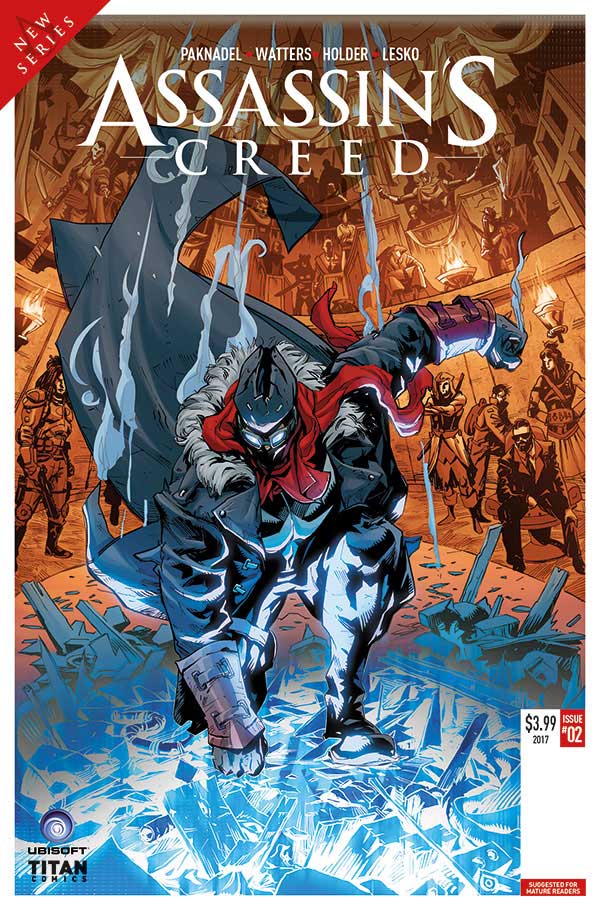
 e to Fanny Brawne, the woman he loved. He put the finishing touches to Bright Star, the love sonnet he dedicated to her, on the voyage from England. The Roman villa that is now the museum was shared by Keats and his friend Joseph Severn, and backs directly onto the steps. One can only imagine that it would have been prime real-estate in any period. And yet the room in which John Keats died is a claustrophobic box.
e to Fanny Brawne, the woman he loved. He put the finishing touches to Bright Star, the love sonnet he dedicated to her, on the voyage from England. The Roman villa that is now the museum was shared by Keats and his friend Joseph Severn, and backs directly onto the steps. One can only imagine that it would have been prime real-estate in any period. And yet the room in which John Keats died is a claustrophobic box. bitter laudanum that he so fiercely demanded from his doctor, who refused to allow him enough to suicide on) there instead hangs a death-mask of his face. A bumpy nose and thin lips, closed perhaps a little too tight, compressed by the weight of the plaster on the corpse’s face. Here is perhaps the most accurate representation of the man we will ever see, and it is rendered in a deathly pallor, with eyes that we can still somehow tell are empty despite the fact that they are forever closed. The dead man’s face hangs, ever-watching, unseeing, over the dead man’s room. Keats is not there.
bitter laudanum that he so fiercely demanded from his doctor, who refused to allow him enough to suicide on) there instead hangs a death-mask of his face. A bumpy nose and thin lips, closed perhaps a little too tight, compressed by the weight of the plaster on the corpse’s face. Here is perhaps the most accurate representation of the man we will ever see, and it is rendered in a deathly pallor, with eyes that we can still somehow tell are empty despite the fact that they are forever closed. The dead man’s face hangs, ever-watching, unseeing, over the dead man’s room. Keats is not there.
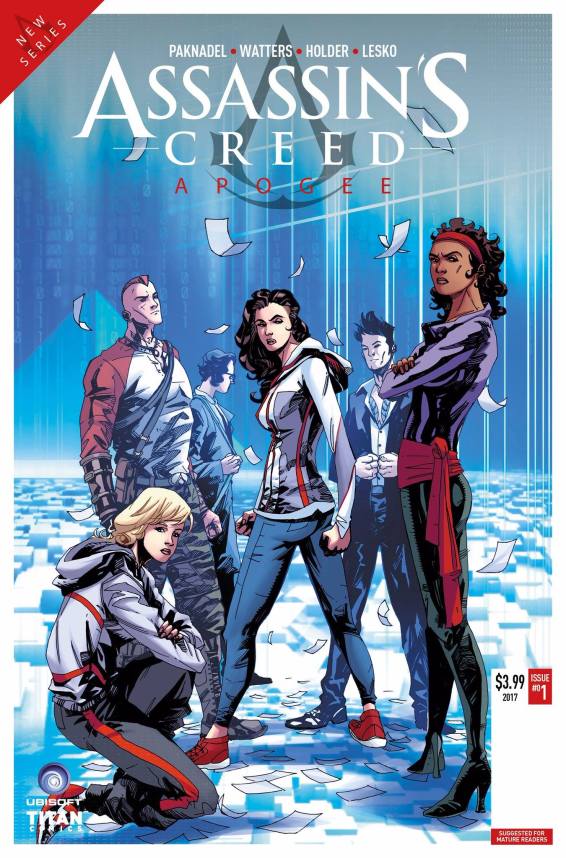
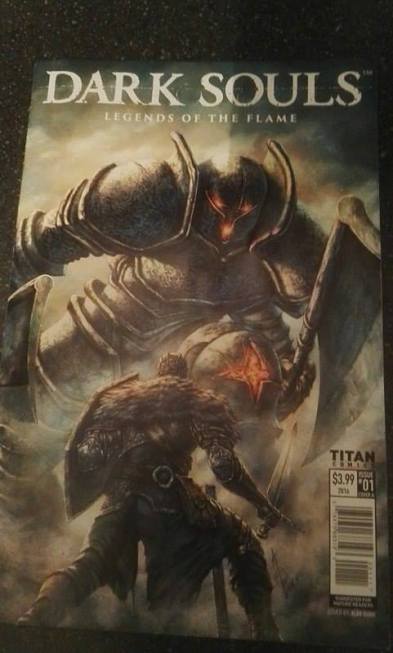 and I am no longer able to rinse that excuse for the general sporadicity of my updates. Fortunately, I have been busy though. Dark Souls: Legends of the Flame from Titan Comics drops in comic stores and on
and I am no longer able to rinse that excuse for the general sporadicity of my updates. Fortunately, I have been busy though. Dark Souls: Legends of the Flame from Titan Comics drops in comic stores and on 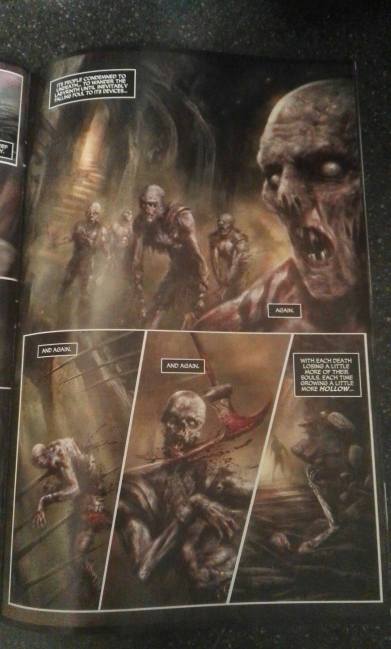 In other news, there are PROJECTS. Ones I can’t talk about yet, but am exceedingly excited for. One bigger project should be announced later this month with some astoundingly good collaborators that is going to be a hell of a lot of fun and is for a rather big franchise. It will be far less ethereal than Dark Souls, but most likely just as stabby.
In other news, there are PROJECTS. Ones I can’t talk about yet, but am exceedingly excited for. One bigger project should be announced later this month with some astoundingly good collaborators that is going to be a hell of a lot of fun and is for a rather big franchise. It will be far less ethereal than Dark Souls, but most likely just as stabby.
